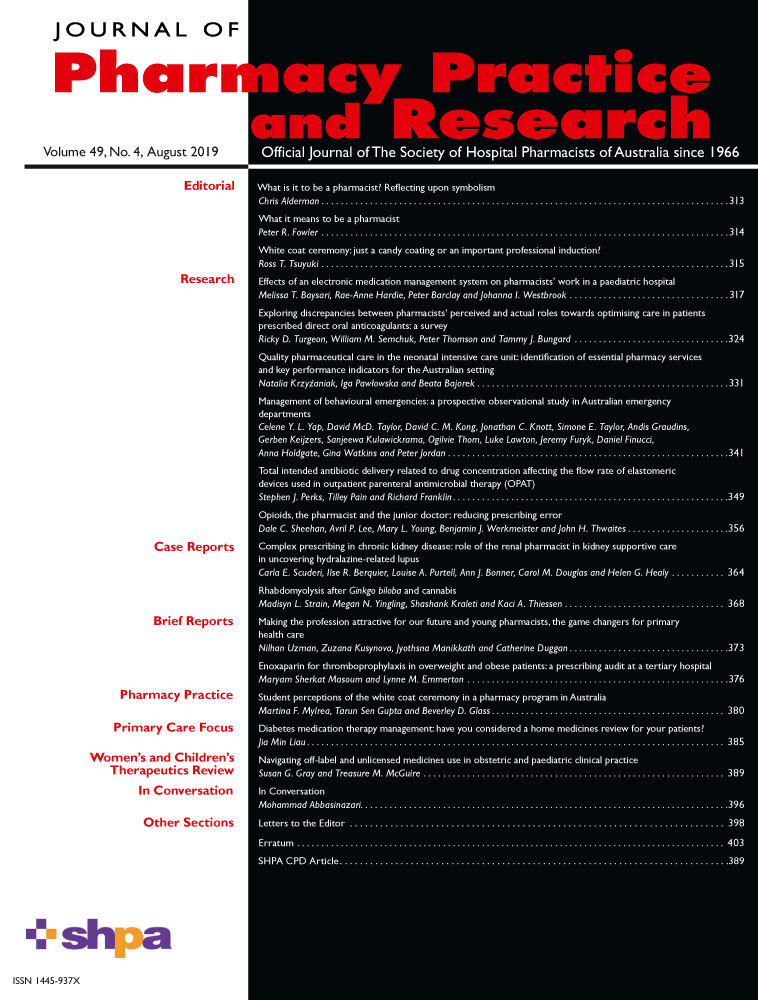Exploring discrepancies between pharmacists’ perceived and actual roles towards optimising care in patients prescribed direct oral anticoagulants: a survey
Abstract
Background
Pharmacists are among the most accessible healthcare professionals, and scopes of practice are evolving. There is a paucity of literature evaluating community pharmacists’ degree of comfort with managing high-risk medications, including anticoagulants.
Aim
To describe discrepancies between perceived and actual roles in care optimisation of patients prescribed direct oral anticoagulants (DOACs), as well as the level of collaboration between pharmacists and other healthcare providers, and barriers to action among pharmacists.
Methods
Community-based pharmacists in Alberta, Canada, were surveyed to evaluate perceived and actual roles, collaboration and barriers. Discrepancies between perceived and actual roles were compared for individual items, and total scores were calculated.
Results
In all, 177 (5%) pharmacists responded to the survey. Perceived role scores were high, and actual role scores were generally lower (median scores 42/52 vs 61/65). Actual role items with the lowest scores were: knowledge of the patient's medical conditions and indication for DOAC; provision of information about the condition being treated with a DOAC; review pertinent laboratory tests at initial prescription fill and refill; and follow-up on adherence and side-effects. Discrepancy rates between perceived and actual roles were low. There was moderate correlation between perceived and actual role scores (Spearman's ρ = 0.512, p < 0.001). Responders reported a high degree of collaboration with physicians. Several system- and organisation-level barriers were identified, although overall barrier burden was low.
Conclusion
Community-based pharmacists perceived a significant role for pharmacists in optimising DOACs for patients, and higher perceived role scores were associated with greater action in actual roles. Removing system-level barriers, and improving communication with prescribers about indications for DOACs, should be prioritised to enhance the role of the pharmacist.




